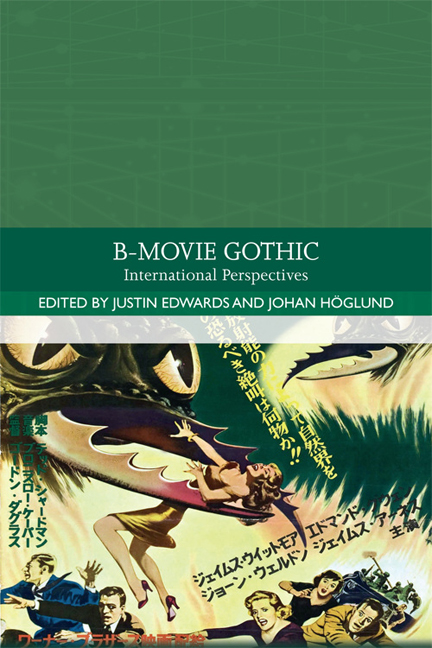10 - Filamu ya kutisha: Tanzanian Horror Films and B-Movie Gothic
Published online by Cambridge University Press: 06 May 2021
Summary
The first Tanzanian horror film, Nsyuka (2003), is about an evil ancestor spirit that haunts a young woman and her family. It was shot over three weeks with a tripod made out of tree branches. The actors were forced to walk long distances to get to the set, and amassed their own funding to make the film. It is, to be sure, a low-budget film that has the quality and style associated with an international B-movie tradition. After the film was made, the music production company Wananchi Video Production saw a potential market, so it adapted the model of Nollywood films to the Tanzanian context, thus producing cheap films on VHS very quickly and selling them to local audiences. The Tanzanian video film industry was born. This set the stage for the first stars of the Tanzanian film industry, the director Mussa Banzi and the actors associated with the group White Elephant.
Many young filmmakers followed in Banzi's footsteps, and as a result, the genre of filamu ya kutisha (frightening film) developed. The Gothic dimensions of these films are highlighted through the various narratives of witchcraft, ghosts, zombies and violence (such as in splatter films). Through the improvement of techniques and production practices, the Gothic content of filamu ya kutisha has undergone major shifts and currents: the clumsily produced movies first made on VHS recorders have evolved into better-quality low-budget films using digital recording devices.
Like other African video films, Tanzanian movies are often judged to have sensational content, low production values and a large commercial market. Consequently, film critics and many movie-goers do not consider filamu ya kutisha to be ‘proper’ African cinema, and yet Tanzanian video movies are immensely popular and have a massive following in the country. But that does not mean that local audiences are ignorant of other cinematic traditions, for foreign films have long been popular with Tanzanian audiences and local video movies are sometimes discussed as copies of North Atlantic films. This raises important questions. How do we categorise Tanzanian video film? Can we apply the B-movie label to these films? Or do the unique aesthetics of these films require a different way of describing and labelling these productions?
- Type
- Chapter
- Information
- B-Movie GothicInternational Perspectives, pp. 157 - 171Publisher: Edinburgh University PressPrint publication year: 2018

